BPA, technically known as Bisphenol A, is a chemical amply found in resin and plastics. Polycarbonate plastics, in particular, which we encounter daily in food containers and water bottles, are rich in this industrial chemical.
BPA is a serious concern among consumers since it leads to various health issues, including behavioral problems in children and blood pressure concerns in adults. So, many conscious customers now prefer their food packaging and water bottles to be BPA-free.
But which bottled water brands use BPA-free packaging?
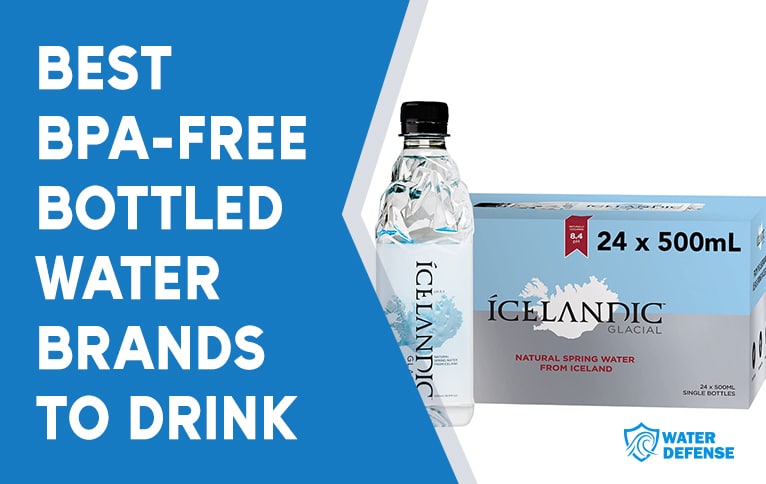
We have dug deep to curate a list of BPA-free bottled water brands. The brands below utilize glass, aluminum, carton, or 100% recycled polyethylene terephthalate (PET) materials.
Just Water
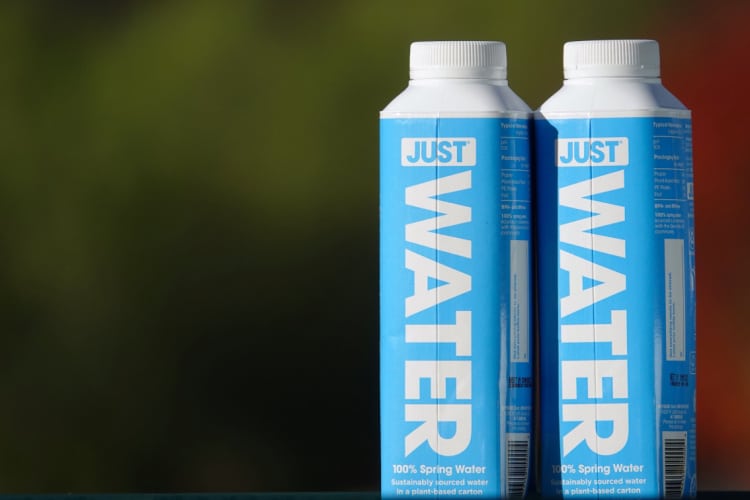
While trying to learn to surf at the age of ten, Jaden Smith became devastated by how much plastic water bottles contaminated our oceans (namely, the Pacific Ocean) and decided to take action. The result was the founding of his completely BPA- and plastic-free bottled water company, Just Water.
In the first years of its conception, Just Water only used plant-based cartons for their water sourced from mountain springs. It was an eco-friendly choice, as carton boxing emits 75% less carbon than plastic bottling.
However, nowadays, the company uses aluminum bottles, especially for packaging its sparkling water types. As aluminum is an infinitely recyclable source material, it further reinforces Just Water’s status as one of the most eco-friendly, sustainable, and BPA-free water bottle producers.
Liquid Death
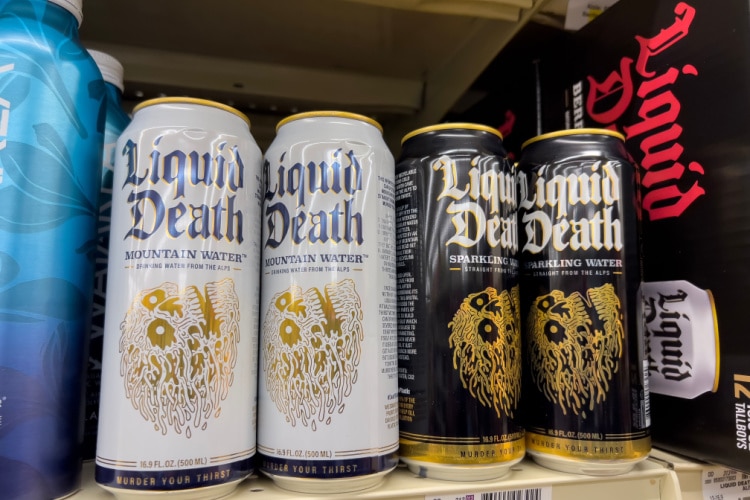
Back when it started, Liquid Death might have seemed a little childish and off-putting, with its water bottles designed like beer cans and embellished with skull drawings. But anyone who wants to quench their thirst without exposure to BPA can get behind the brand’s two marketing slogans: “Murder Your Thirst” and “Death to Plastics.”
Liquid Death uses aluminum packaging that looks like beer cans because, as a brand, it stands against plastics and their hazardous side effects, not just because the cans look cool.
The brand also features sparkling water and ice tea in its catalog. These products come in aluminum cans as well.
On a final note, Liquid Death’s still water option is sourced from the mountain springs in Austria. It means it’s not only BPA-free but also spring water, which is the best water to drink.
Waiākea
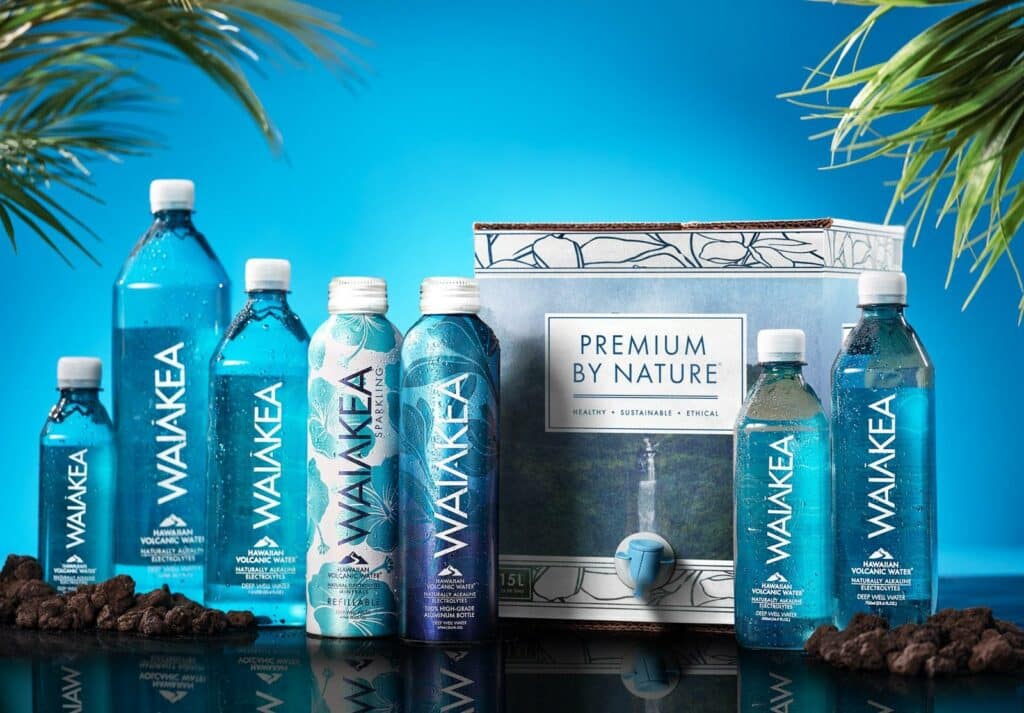
Waiākea is sourced from one of the most beautiful places in the world — Big Island, Hawaii. The water is a gift on Earth since it’s purified by volcanic craters on its journey. The brand also emphasizes ethical, carbon-neutral, and sustainable production, using only BPA-free materials in its bottling.
There are three different packaging styles Waiākea utilizes: aluminum bottles, bag-in-box, and Oceanplast.
Aluminum is recyclable and BPA-free by default. Plus, the bag-in-box design features a 15-liter water bag placed inside a carton box. These package types are all recyclable, refillable, and reusable indefinitely.
The Oceanplast packaging style, on the other hand, refers to the brand’s recycling program. They recycle BPA-free plastics for this style, including PETs collected from the ocean, producing recycled PETs, also known as rPETs.
The Waiākea rPET is BPA-free and requires 85% less energy to manufacture compared to regular PET bottles. As such, it’s a drastically more eco-friendly source material for water bottling.
Acqua Panna
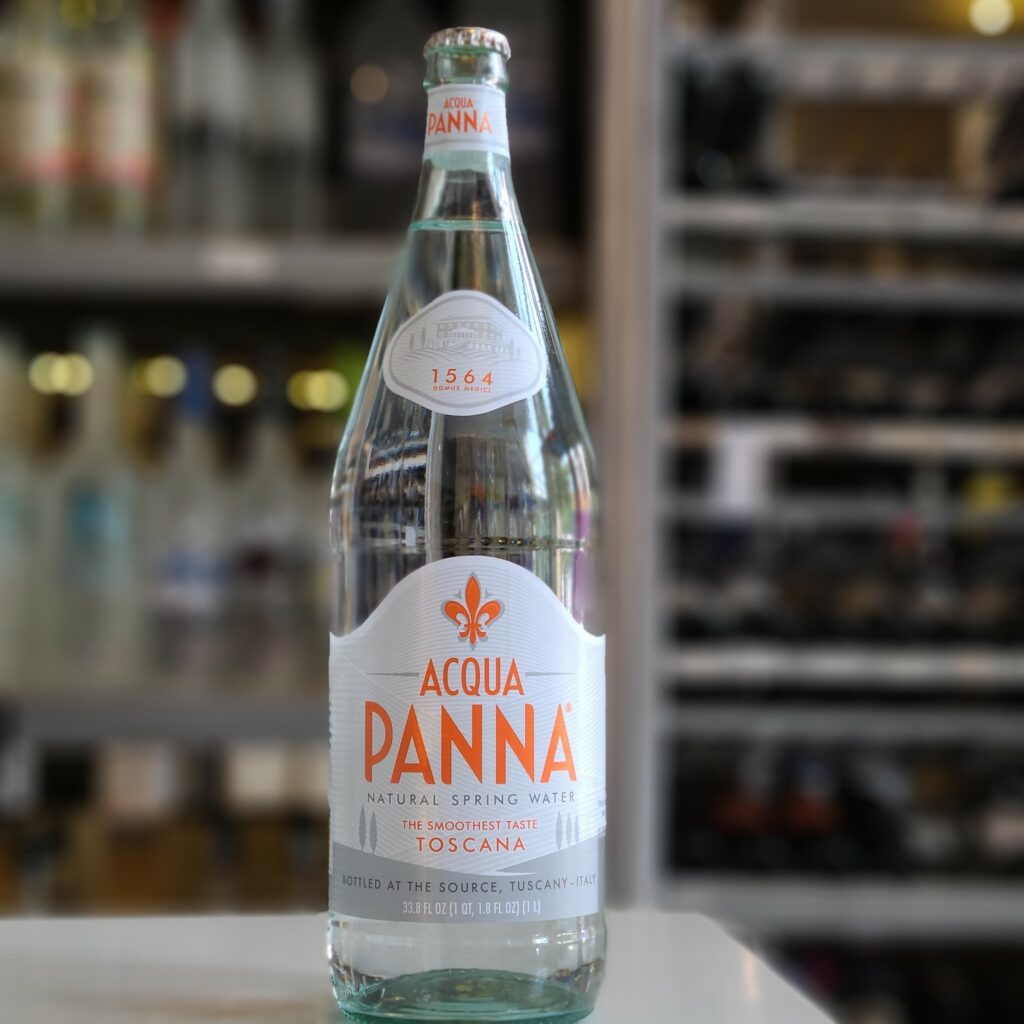
Similar to Waiākea, Acqua Panna’s organically alkaline water (pH 8.8) originates from a natural spring in beautiful Tuscany, Italy, that’s been providing high-quality water since its discovery in 1564.
Considering the spring water’s quality, it’s only sensible for the brand to be eco-friendly and prefer bottling its water in glass bottles that preserve its taste and ingredients.
Additionally, Acqua Panna’s water has been one of the primary choices of high-end restaurants and gourmets due to its rich mineral content and natural alkalinity. Its popularity in such circles means it’s a luxury item, so its glass bottles aren’t likely to go anywhere.
Yet, due to its rising popularity among consumers, the brand started to sell its water in more budget-friendly PET bottles. Rest assured that it only uses high-quality, well-tested, and BPA-free PET.
Mountain Valley
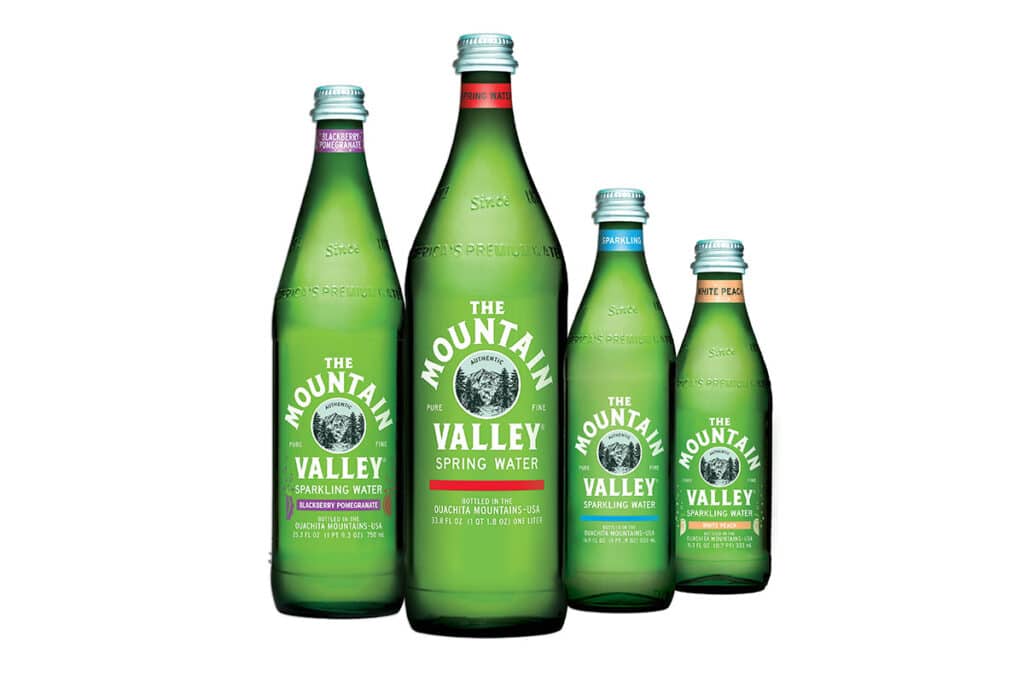
Mountain Valley hails its water from the Ouachita Mountains, Arkansas, with a natural total dissolved solids level (TDS) of 222 mg/L. These TDS levels mean the water is rich in minerals and has a distinct taste, which is why it’s one of the most popular water brands in the United States.
Its popularity is well-deserved, too, because the brand preserves the rich taste of its particular spring water by distributing it in glass bottles exclusively. Since no polycarbonate plastics are found in glass, it’s completely BPA-free.
The brand has lately started producing recyclable, refillable, and reusable aluminum water bottles. Needless to say, they’re also BPA-free.
Icelandic Glacial
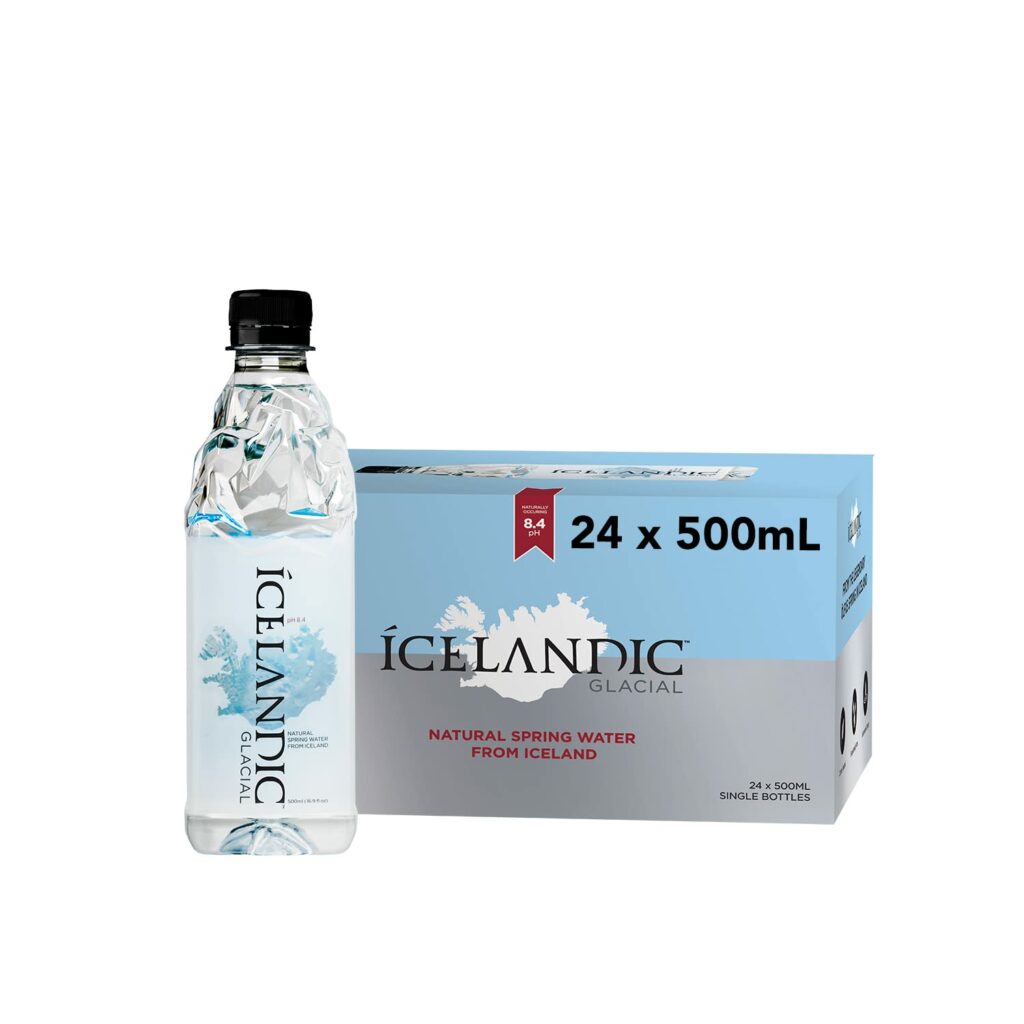
Speaking of the Earth’s natural treasures, it’d be criminal to overlook Iceland as one of the best water sources on the planet. Icelandic Glacial Water comes from (as the product name also suggests) Iceland’s glaciers. The rainwater travels through volcanic craters for thousands of years before it spurts out of the glaciers in what is truly a remarkable feat of nature. And the brand does everything in its power to match this remarkable water source.
For instance, one of the main reasons Icelandic Glacial stands out among its competition is its award-winning and innovative bottle designs.
Besides the artistic designs, the brand emphasizes sustainability, carbon neutrality, and eco-friendliness.
So, Icelandic Glacial employs only high-quality, BPA-free, food-grade, recycled, and recyclable PET bottles for water distribution. Additionally, it only uses geothermal and hydroelectric power while producing water bottles and bottling water. This process relies entirely on natural energy sources while ensuring zero carbon emissions.
Saratoga
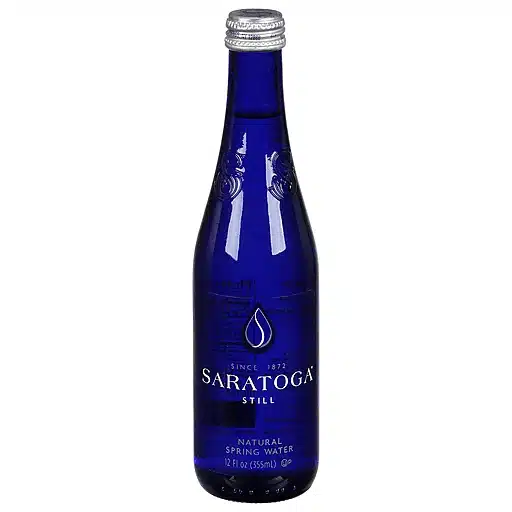
You must have seen Saratoga’s cobalt blue glass bottles furnishing high-class restaurant tables or some influencers’ Instagram stories. If you have, you may have even mistaken them for champagne bottles. As one of the best premium water brands in the United States, Saratoga distributes its water only in BPA-free, cool-looking glass bottles.
Saratoga sources its water from Saratoga Springs, New York, the town home to twenty springs. Some of these springs provide still water, and some give naturally sparkling water. The company bottles both directly at the source, and BPA-free glass bottling helps preserve the taste of each.
The bottling of Saratoga is one of the main reasons for the brand’s popularity.
Antipodes
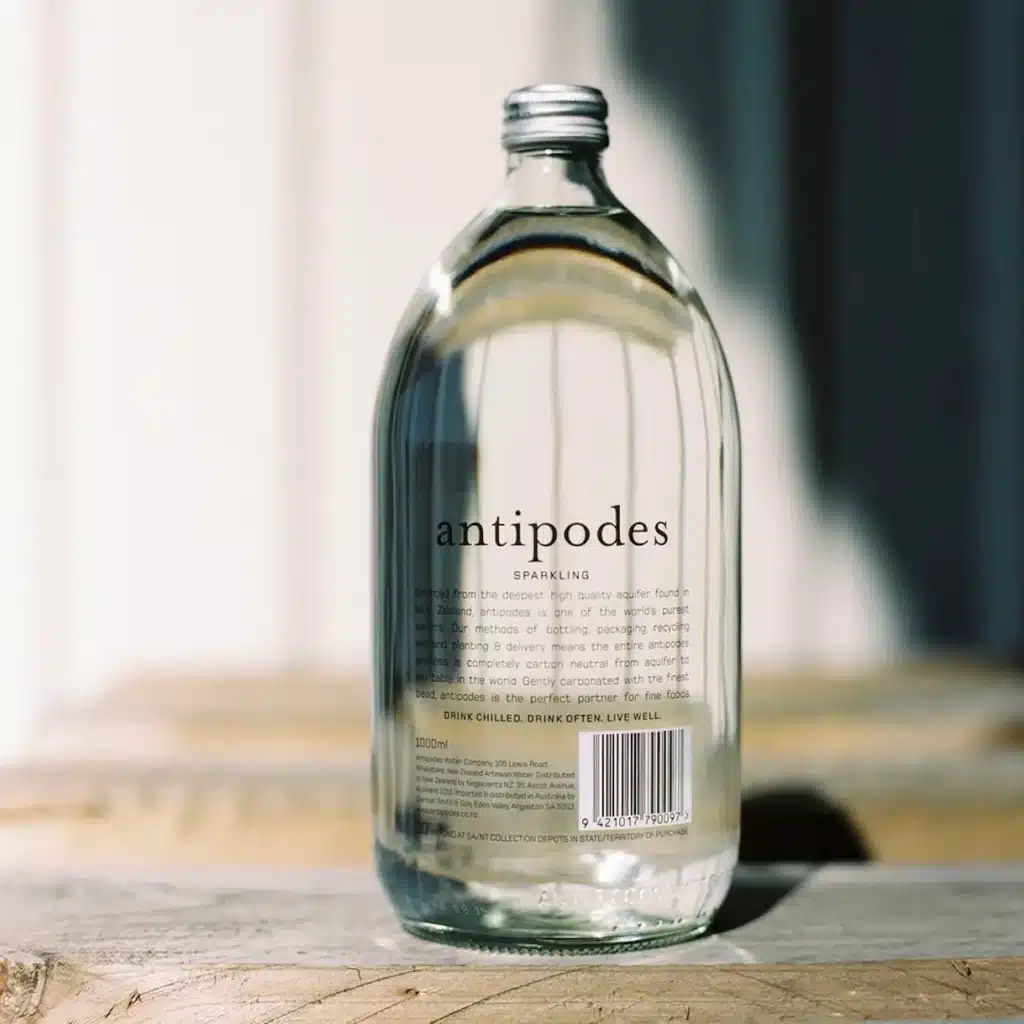
Antipodes is another brand that boasts ethical and sustainable production. The brand utilizes only BPA-free glass bottles and has been carbon-neutral since 2007, which makes it one of the first bottled water brands to go BPA-free.
Antipodes’ water source sits deep in the earth at 327 meters of depth. The journey rainwater takes to the source is 50 to 300 years long. During this journey, ignimbrites (cooled volcanic rock formations) cleanse the water of impurities and give it 76 mg/L of silica, a mineral known for giving the water a sweet taste and smooth texture.
In the end, the brand’s glass bottling not only provides BPA- and plastic-free packaging but also helps preserve the unique taste and texture the water has thanks to its high silica content.
Lastly, you’ll be happy to know the brand uses 100% renewable energy sources in the production of its water.
Gerolsteiner
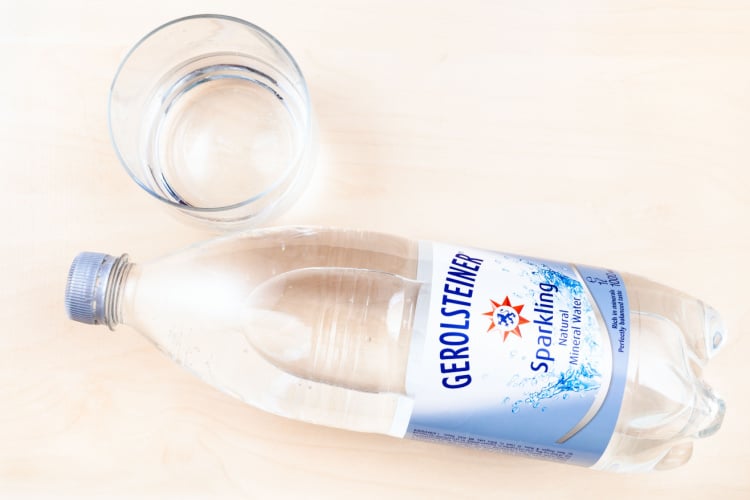
Gerolsteiner is one of the mineral water brands with the highest TDS, calcium, and magnesium count. Such high mineral content results in a bold, rich, but also bitter taste that may put some off, but many think it’s what makes Gerolsteiner the superior mineral water choice.
Gerolsteiner mineral water is acidic by nature, thanks to how carbon-rich its source is. Acidic water can easily dissolve heavy metals and chemicals, including BPA because it’s corrosive and abrasive.
Both the mineral abundance and acidic character of Gerolsteiner’s water make it highly unsuitable for standard plastic bottles. The brand distributes its mineral water in glass bottles.
You may also come across more budget-friendly PET Gerolsteiner bottling. Although rare, these bottles are also made of 100% BPA-free material.
Frequently Asked Questions
In this section, we’ll explain what BPA is, its health effects, and what you can do to avoid it.
Bisphenol A is an industrial chemical that has various industrial uses. It has silently become a part of our lives over the years due to its presence in plastics and resin.
It’s no secret that resin and plastics are used in producing almost everything, from surfboards to water supply lines. You can find them in almost every industry, from electronics to construction. Food containers and water bottles extensively contain plastics, while food cans and bottle caps have epoxy resin.
Depending on the temperature in which these materials are kept and stored and the acidity of the food stored within, BPA leaches in varying degrees. Additionally, and maybe even more importantly, since people dump items containing BPA into ground, ocean, or surface waters, the chemical ends up in the soil, municipal or private water sources, and animals (through consumption of BPA-contaminated food).
Due to these reasons, the presence of BPA around us is ubiquitous. Studies suggesting it’s present in mother’s milk and infant urine are evidence of that.
Multiple studies support that there’s a link between various conditions and health concerns and the presence of BPA in our environment. Although not all of them are conclusive yet, the studies linked below suggest strong correlations between some severe health problems and exposure to BPA:
Increased blood pressure and heart rate variability
Increased risk of type two diabetes and obesity since BPA alters the human endocrine system
Behavioral changes in children, accompanied by high levels of anxiety, depression, inattention, and hyperactivity
Various cardiovascular issues, including coronary and peripheral arterial diseases, hypertension angina, and cardiac arrest
Retarded fetal growth, if the mother is exposed to BPA in the prenatal period
Considering the implications of these issues, it’s best to avoid BPA as much as possible – at least when it comes to drinking water.
Since BPA is amply present in plastics, it’s a good idea to avoid plastic water bottles and bottled water brands that use them. We recommended brands that utilize glass or aluminum in their packaging. The brands that distribute water in PET bottles also have a place on our list as they are also BPA-free and reliable.
